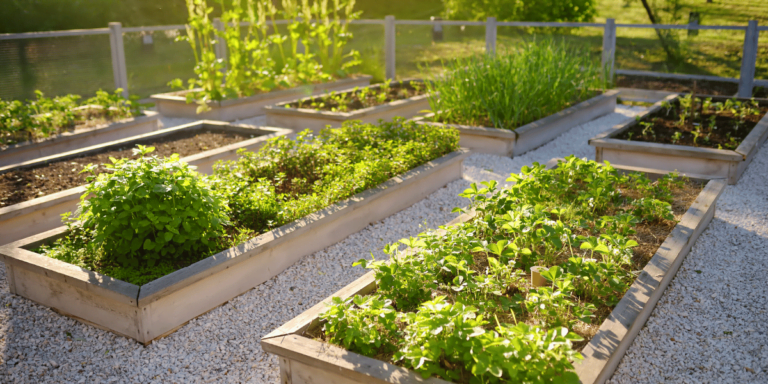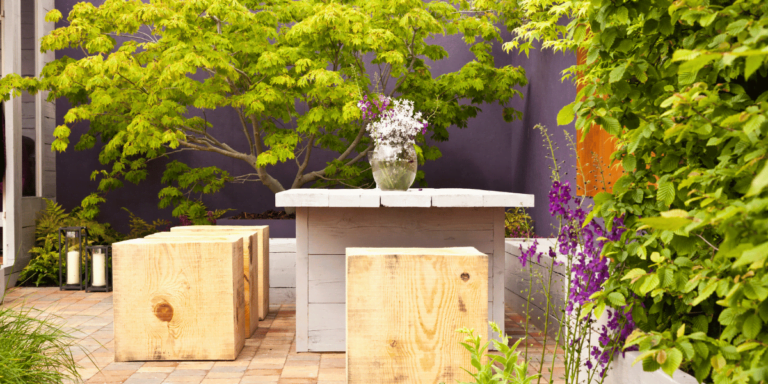Gardening in a sustainable way is not only beneficial for the environment but also for your wallet. By using recycled materials, reducing the use of natural resources, and implementing low-maintenance techniques, you can create an eco-friendly garden that is both beautiful and sustainable. Incorporating sustainable urban gardening practices, eco-friendly landscape design, innovative water conservation techniques, and renewable energy solutions can help transform your garden into a green living space.
Creating a green living garden is not only about implementing eco-friendly practices but also about fostering biodiversity and supporting the local ecosystem. By incorporating sustainable urban gardening techniques, eco-friendly landscape design, and innovative water conservation methods, you can transform your garden into a thriving and environmentally conscious space. Remember to choose resilient plant varieties, improve soil health, and prioritize native plants to create a sustainable and beautiful garden. With these innovative ideas, you can embrace green living and make a positive impact on the environment.
Key Takeaways:
- Green living garden ideas offer a sustainable and eco-friendly way to create beautiful outdoor spaces.
- Sustainable urban gardening practices, such as using recycled materials and reducing natural resource consumption, help minimize environmental impact.
- Eco-friendly landscape design enhances the beauty of your garden while ensuring the efficient use of resources.
- Innovative water conservation techniques help preserve water resources while maintaining a healthy garden.
- Implementing renewable energy solutions in your eco-garden can further reduce your carbon footprint.
Plant Successional Blooms
Planting successional blooms in your garden is a sustainable garden idea that can bring beauty and life to your outdoor space throughout the year. By carefully selecting different plants that flower at different times, you can ensure a continuous supply of blooms, attracting pollinators and beneficial insects.
This practice of planting successional blooms not only adds color and vibrancy to your garden but also supports the health and balance of your garden ecosystem. When you provide a consistent source of nectar and pollen through the year, you create a welcoming habitat for bees, butterflies, and other pollinators. This, in turn, promotes pollination and helps maintain biodiversity in your garden.
A cost-effective way to diversify your garden’s floral display is by collecting seeds and growing your own plants. This allows you to experiment with a wide variety of flowering species and create a truly unique garden. Additionally, by choosing plants that are native to your region, you support the preservation of local plant species and promote a healthier ecosystem.
So why not introduce plant successional blooms into your garden and enjoy a year-round burst of color?
| Season | Plants |
|---|---|
| Spring | Tulips, daffodils, irises |
| Summer | Roses, sunflowers, zinnias |
| Fall | Asters, chrysanthemums, marigolds |
| Winter | Pansies, cyclamens, snowdrops |
Use Companion Planting
Companion planting is a sustainable gardening technique that involves planting different plants together to provide mutual benefits. By strategically combining specific plant varieties, you can naturally deter pests, improve soil health, and increase crop yields. Companion planting is a great way to reduce the need for harmful pesticides, promote biodiversity, and create a thriving and eco-friendly garden.
One example of companion planting is growing tagetes (marigold) around tomatoes. Tagetes emit a scent that repels whiteflies, a common tomato pest. By interplanting tagetes with tomatoes, you can protect your tomato plants from these harmful insects without relying on chemical pesticides.
Another example is planting garlic and onions near carrots. The strong smell of garlic and onions can help mask the scent of carrots, deterring carrot root flies. By adopting this companion planting technique, you can decrease the risk of pest infestations and improve the overall health and yield of your carrots.
Discover the benefits of companion planting in your garden and create a sustainable and flourishing ecosystem. Here’s a simple guide to get you started:
Companion Planting Guide
| Plant Combination | Benefits |
|---|---|
| Tomatoes + Tagetes (Marigold) | – Deters whiteflies – Improves tomato health – Increases tomato yield |
| Carrots + Garlic + Onions | – Deters carrot root flies – Enhances carrot growth – Masks the scent of carrots |
| Beans + Corn + Squash | – Improves soil fertility – Utilizes vertical space efficiently – Provides natural shade and support |
| Cabbage + Dill | – Repels cabbage pests – Attracts beneficial insects – Enhances cabbage flavor |
Consider incorporating companion planting in your vegetable garden to create a harmonious and sustainable growing environment. Experiment with different combinations and observe the positive impact on your plants and ecosystem.
Cover Crops with Protective Nets
Protecting your crops from pests is an essential part of maintaining a thriving garden. Instead of resorting to chemical pesticides, consider using protective nets to create a natural barrier that keeps unwanted critters at bay. This sustainable garden idea not only promotes eco-friendly practices but also safeguards the health and productivity of your plants.
By investing in a strong and durable net, you can effectively shield your crops from caterpillars, birds, and other leaf-munching wildlife while allowing sunlight, air, and water to reach your plants. This method is particularly beneficial for delicate crops and seedlings that are vulnerable to pest damage.
Using cover crops with protective nets offers several advantages:
- Chemical-free pest control: Instead of relying on harmful chemical pesticides, using nets provides a natural and non-toxic solution for pest management. It eliminates the risk of exposing your plants to harmful substances and minimizes the impact on the environment.
- Reduces plant stress: Pests can cause stress to your plants, affecting their growth and overall health. By creating a physical barrier with nets, you can prevent pest attacks and help your plants thrive without unnecessary stress.
- Long-term sustainability: Investing in a quality net allows you to reuse it year after year, reducing waste and promoting a more sustainable garden. This not only saves money but also contributes to a greener environment by minimizing the use of disposable pest control products.
Choosing the Right Net
When selecting a protective net for your cover crops, consider the following factors:
- Material: Opt for nets made from durable and UV-resistant materials like polyethylene or nylon. These materials offer excellent protection and longevity, ensuring that your netting will withstand various weather conditions.
- Mesh size: The size of the mesh should be small enough to keep pests out while allowing air, sunlight, and water to reach your crops. The specific mesh size will depend on the type of pests you are trying to deter. For example, smaller mesh sizes are effective against insects, while larger ones can prevent birds from damaging your crops.
- Size and shape: Measure the area you need to cover with the net and choose a size and shape that will adequately fit your garden bed or row of plants. It’s also advisable to leave some room for plant growth to ensure the net doesn’t suffocate your crops as they expand.
By employing cover crops with protective nets, you can enjoy a thriving garden while minimizing the use of harmful chemicals and reducing waste. This sustainable garden idea not only ensures the health and productivity of your crops but also contributes to a more environmentally friendly approach to gardening.
Choose Resilient Varieties of Plants living garden
When creating a sustainable garden, it is crucial to select plants that can withstand various weather conditions and require minimal intervention. Choosing resilient varieties not only benefits the environment but also saves you time and effort in maintenance. By opting for plants that are naturally adapted to your region, you can create a thriving garden that is more in harmony with its surroundings.
One effective way to build a resilient garden is by exploring heritage varieties. These plants have stood the test of time, adapting to changes in climate over generations. By growing heritage varieties, you can contribute to preserving biodiversity and flavor diversity in your garden, while also showing your commitment to sustainable practices.
Here are some examples of resilient plant varieties and their benefits:
| Plant | Characteristics |
|---|---|
| Native Perennials | Require minimal watering and maintenance, support local pollinators and wildlife |
| Drought-Tolerant Succulents | Thrives in dry conditions, reduces water consumption |
| Heirloom Tomatoes | Resistant to diseases and pests, offer unique flavors |
| Native Grasses | Erosion control, require little to no watering once established |
By incorporating resilient plant varieties into your garden, you can create a more sustainable and low-maintenance landscape. These plants not only contribute to the overall health of your garden but also provide visual interest and a unique touch to your outdoor space.
Investing in resilient plants not only benefits your garden but also aligns with sustainable garden ideas. By choosing plants that can adapt to changing weather conditions and exploring heritage varieties, you are taking important steps towards maintaining an eco-friendly and resilient garden.
Improve Soil Health
Healthy soil is the foundation of a sustainable garden. To improve soil health, consider incorporating the following practices:
- Use Organic Matter: Add compost or leaf mulch to your soil. These organic materials help improve soil structure, retain moisture, and promote nutrient availability for your plants.
- Foster Beneficial Microorganisms: Healthy soil is teeming with beneficial microorganisms that break down organic matter and release nutrients. By using organic matter and avoiding harmful chemicals, you can support the growth of these microorganisms and create a thriving soil ecosystem.
- Avoid Excessive Tilling: Over-tilling can disrupt the natural structure of the soil and cause erosion. Instead, practice minimal tilling or consider using no-till gardening techniques to preserve the soil’s integrity.
- Choose Peat-Free Compost: Peat extraction poses a threat to peatland habitats and releases carbon dioxide into the atmosphere. Opt for peat-free compost alternatives to reduce your environmental impact while still enriching your soil.
By implementing these soil health practices, you can enhance the fertility and resilience of your garden, leading to healthier plants and a more sustainable garden ecosystem.
Benefits of Improving Soil Health
Improving soil health in your garden offers several benefits:
- Enhanced Nutrient Availability: Healthy soil supplies essential nutrients to plants, ensuring their optimal growth and vitality.
- Increased Water Retention: Soil rich in organic matter has better water-holding capacity, reducing the need for frequent irrigation and conserving water resources.
- Promoted Plant Growth: Healthy soil supports robust root development, leading to stronger, more productive plants.
- Reduced Soil Erosion: Maintaining soil structure and minimizing disturbance decreases the risk of erosion, preserving valuable topsoil.
- Elevated Carbon Sequestration: Healthy soil acts as a carbon sink, absorbing and storing atmospheric carbon dioxide, thereby mitigating climate change.
| Improving Soil Health | Benefits |
|---|---|
| Use organic matter | Improves soil structure, increases nutrient availability, promotes beneficial microorganisms |
| Foster beneficial microorganisms | Supports nutrient breakdown, enhances soil fertility, promotes healthy plant growth |
| Avoid excessive tilling | Preserves soil structure, prevents erosion, maintains soil ecosystem |
| Choose peat-free compost | Reduces environmental impact, maintains healthy soil without supporting peat extraction |
By adopting these sustainable gardening practices, you not only improve the health of your garden but also contribute to the larger goal of environmental stewardship.
Choose Native Plants
When it comes to creating a sustainable garden, choosing native plants can make a significant difference. Native plants, which are naturally found in your region, have evolved to thrive in the local climate and soil conditions. By incorporating these plants into your garden, you can enjoy several benefits while reducing the need for excessive watering and fertilization.
One of the advantages of native plants is their ability to withstand drought conditions, making them more resilient to local weather patterns. Their deep root systems help them access water deep within the soil, reducing the need for supplemental irrigation. This not only conserves water but also saves you time and money on maintenance.
Another benefit of native plants is their role in supporting local wildlife. They provide essential habitats and food sources for native insects, birds, and other animals. This promotes biodiversity and creates a harmonious ecosystem in your garden. You can further enhance this by including a wildflower patch, which attracts a diverse range of pollinators such as bees and butterflies.
By choosing native plants, you not only create a sustainable garden but also contribute to the preservation of local plant species and their genetic diversity. Additionally, native plants are often low-maintenance, as they are adapted to the local climate and require minimal intervention.
When planning your garden, take the time to research native plant species that are suitable for your region. Consider factors such as sunlight requirements, soil type, and aesthetic appeal. By selecting a variety of native plants, you can create a visually stunning garden that supports local ecology.
Remember, choosing native plants not only benefits your garden but also helps protect and preserve the natural environment around you. Embrace the beauty and sustainability of native plants as you create a thriving, eco-friendly garden.
The Benefits of Choosing Native Plants
- Well-adapted to the local climate
- Require less watering and fertilization
- Provide habitats and food sources for local wildlife
- Promote biodiversity
- Low-maintenance
Conclusion
Embracing green living garden ideas is not just a trend, but a crucial step towards a sustainable future. By implementing eco-friendly practices and innovative techniques, you can create a beautiful garden that promotes biodiversity and supports the local ecosystem.
Start by incorporating sustainable urban gardening methods, such as companion planting and cover crops with protective nets, to minimize the use of harmful pesticides and create a natural balance in your garden. Focus on choosing resilient plant varieties that can adapt to changing weather conditions and require less maintenance, reducing your ecological footprint.
Improving soil health is another vital aspect of a green living garden. Use organic matter like compost or leaf mulch to nourish your soil and encourage the growth of beneficial microorganisms. Avoid excessive tilling and opt for peat-free compost to protect the environment and maintain long-term soil fertility.
Lastly, prioritize native plants in your garden design. Native plants not only require less watering and fertilization but also provide habitats and food for local wildlife, contributing to the preservation of biodiversity. Add a wildflower patch to attract diverse pollinators and create a harmonious ecosystem in your garden.
By embracing these sustainable practices and incorporating eco-friendly design in your garden, you can make a positive impact on the environment while creating a beautiful and thriving green space. Let your garden be a testament to the power of embracing green living and fostering biodiversity. Together, we can create a sustainable future for generations to come.
Frequently Asked Questions
How can I create a sustainable garden?
You can create a sustainable garden by incorporating sustainable urban gardening practices, eco-friendly landscape design, innovative water conservation techniques, and renewable energy solutions. Using recycled materials, reducing the use of natural resources, and implementing low-maintenance techniques can also contribute to making your garden more sustainable.
What are plant successional blooms?
Plant successional blooms are a technique where you plant different flowers that bloom at different times throughout the year. This ensures a steady supply of flowers and attracts pollinators and beneficial insects to your garden. It creates a continuous source of food for pollinators and supports the health of your garden ecosystem.
What is companion planting?
Companion planting is a technique that involves planting different plants together to provide mutual benefits. For example, planting tagetes around tomatoes can deter pests like whiteflies, and growing garlic and onions near carrots can mask the smell and deter carrot root flies. By utilizing companion planting in your garden, you can reduce the need for harmful pesticides and improve the health and yield of your crops.
How can I protect my crops from pests without using chemicals?
You can protect your crops from pests by covering them with nets. This method avoids the use of chemical pesticides and prevents caterpillars and other leaf-munching wildlife from damaging your plants. By investing in a strong net, you can reuse it year after year, reducing waste and creating a more eco-friendly garden.
How do I choose resilient varieties of plants for my garden?
Selecting plants that are resilient and can adapt to changing weather conditions is key to maintaining a sustainable garden. These plants require less intervention and maintenance, making them more environmentally friendly. In addition, exploring heritage varieties that can withstand climate change can help preserve flavor and diversity in your garden.
How can I improve soil health in my garden?
You can improve soil health by using organic matter like compost or leaf mulch. This improves soil structure, increases nutrient availability, and supports the growth of beneficial microorganisms. Avoiding excessive tilling and using peat-free compost will also benefit the environment and help maintain healthy soil for your plants.
Why should I choose native plants for my garden?
Choosing native plants for your garden provides multiple benefits. Native plants are well-adapted to the local climate and require less watering and fertilization. They also provide habitats and food sources for local wildlife, supporting biodiversity and creating a more sustainable ecosystem. Including a wildflower patch can attract a diverse range of pollinators to your garden.
How can I create a sustainable and beautiful garden?
To create a sustainable and beautiful garden, incorporate sustainable urban gardening techniques, eco-friendly landscape design, and innovative water conservation methods. Choose resilient plant varieties, improve soil health, and prioritize native plants to create a sustainable and attractive garden. By embracing green living practices, you can make a positive impact on the environment.

















